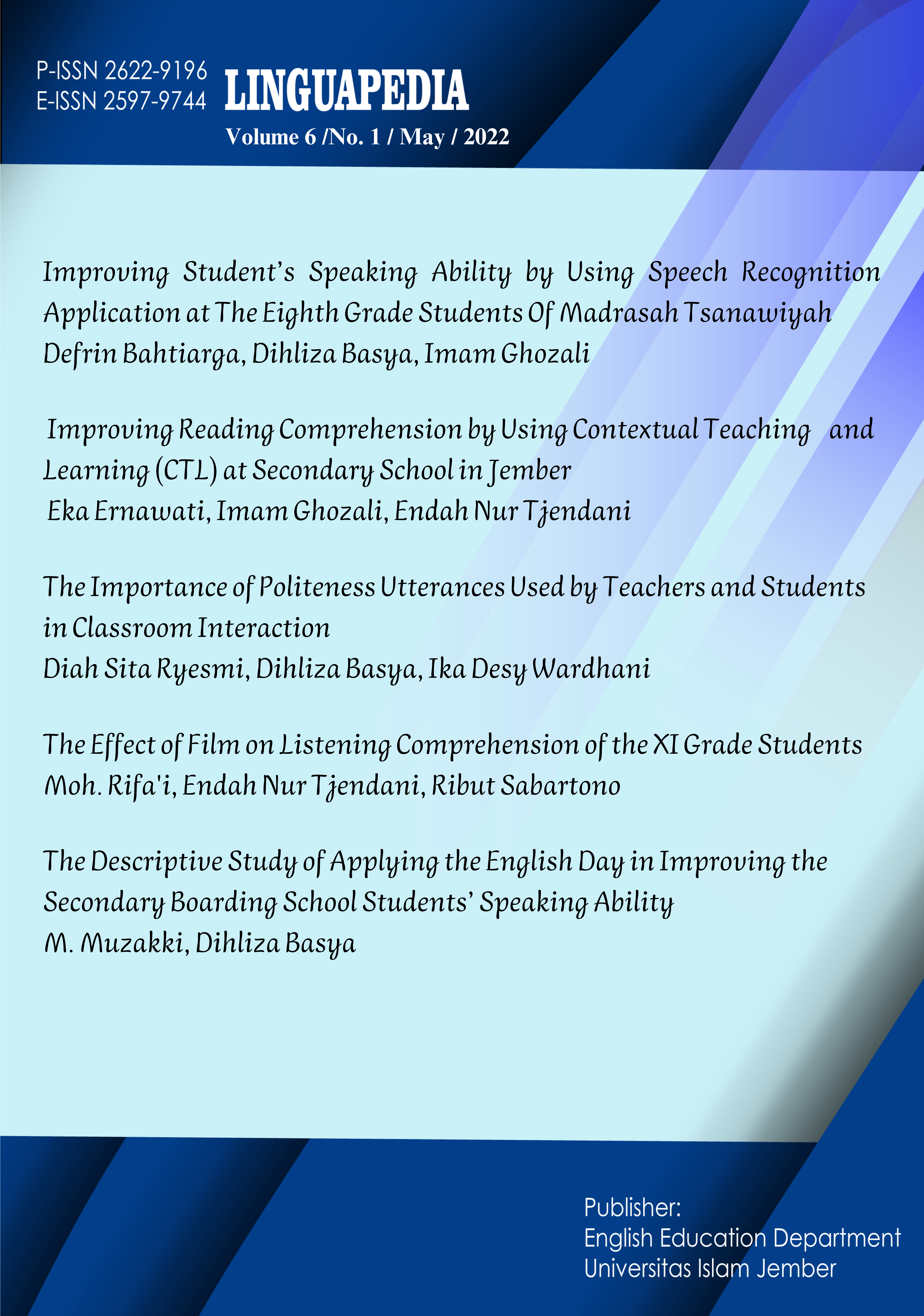The Importance of Politeness Utterances Used by Teachers and Students in Classroom Interaction
DOI:
https://doi.org/10.56013/linguapedia.v6i1.2901Keywords:
politeness; politeness strategies; speech acts; classroom interactionAbstract
This study aimed at analyzing the kinds of politeness strategies, types of illocutionary act, and the factors influenced the teachers and students’ classroom interaction. The data of this qualitative study were taken from observed interactions in the teaching and learning process in the classroom. The result of the study show (1) politeness was conveyed through two strategies, namely, positive, and negative politeness; in English Class and Ngoko (Low Speech) and Krama (High Speech) in Pondok Class. (2) The type of illocutionary act used by teacher and student in the politeness have found two type illocutionary act, they are Representative and Directive (3) the researcher has found factor payoff in English class and factor age, factor status in Pondok class. The politeness used at classroom interaction at English Class was proven low because English teacher still do mistake in using politeness and she does not use politeness frequently; therefore, many students are not active speaking English in classroom. The politeness are efficient teaching and learning, respect communication between teacher and students, togetherness between teacher and students, cooperating interaction between teacher and students, and the politeness can motivate students and developing a meaningful teaching and learning process.






